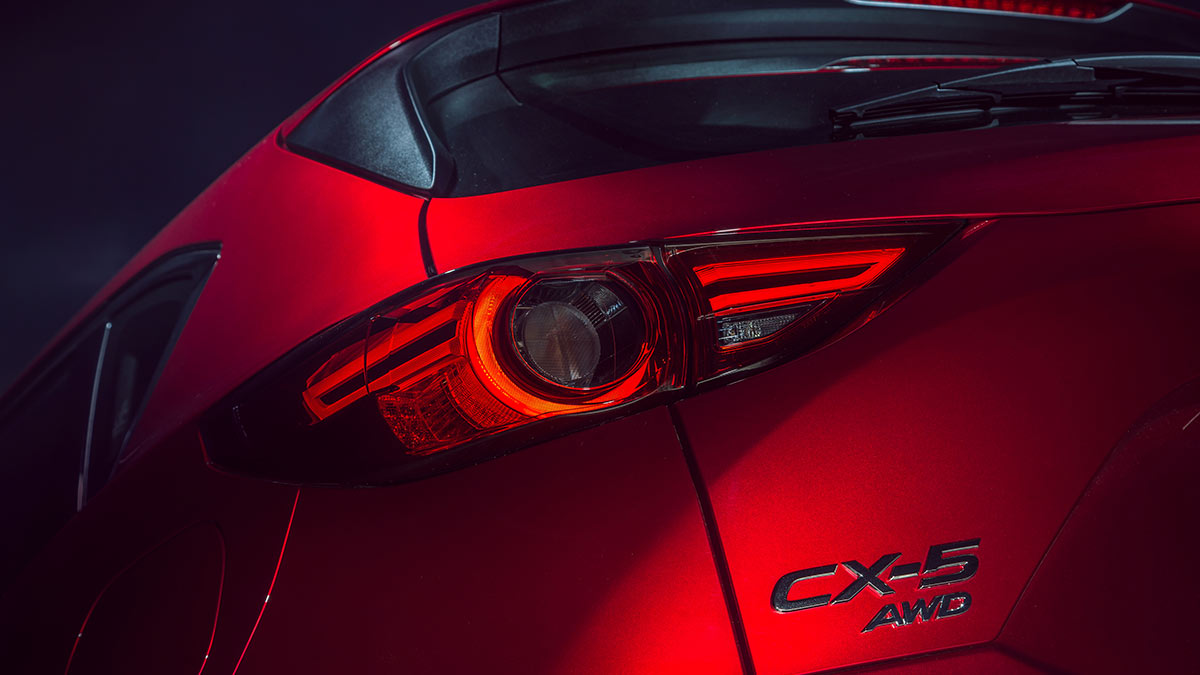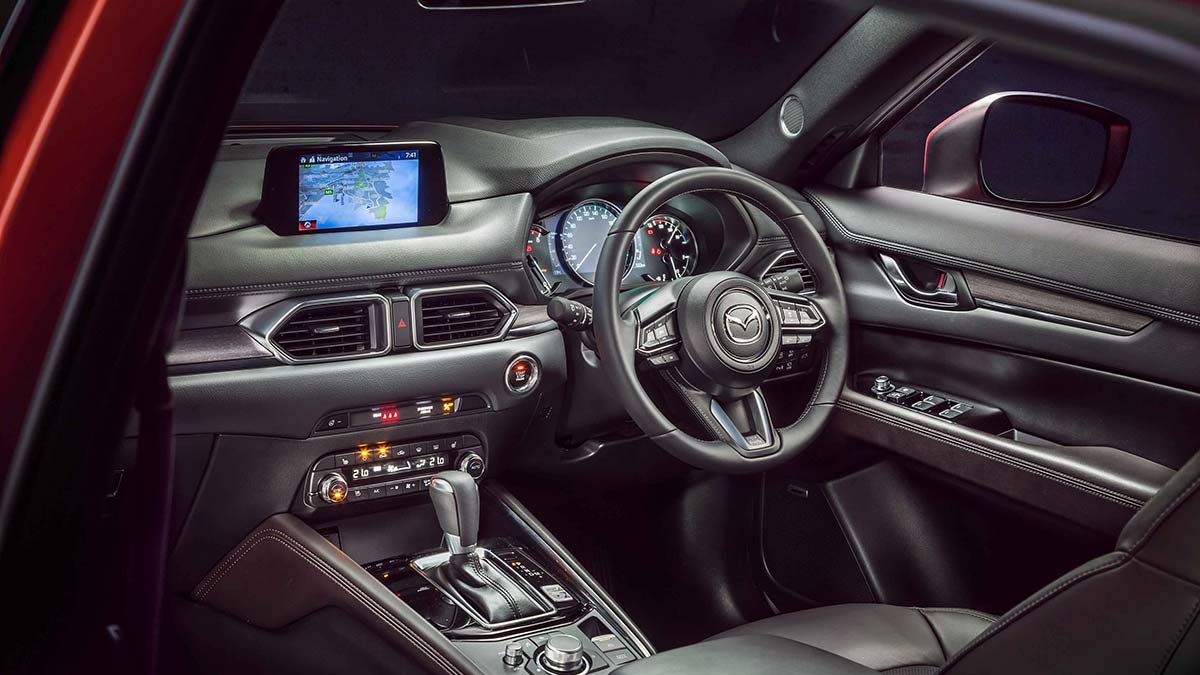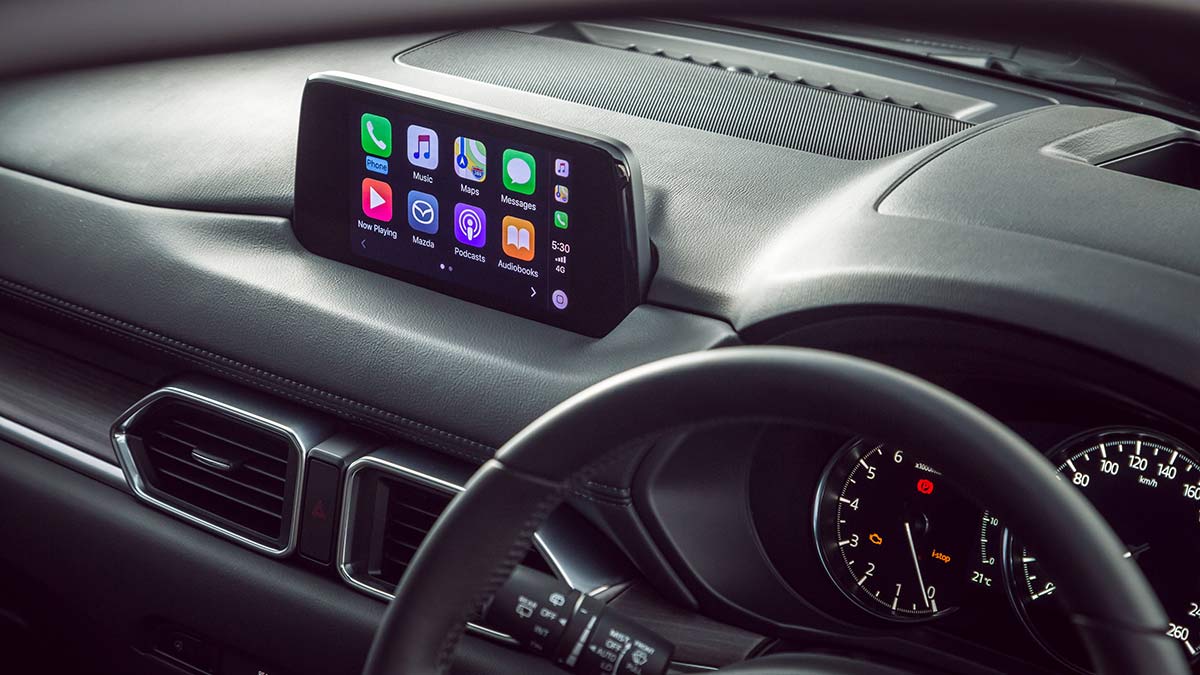The ninth-generation Toyota HiLux has arrived, bringing with it a futuristic forward exterior design, more safety and tech and the same rugged capability owners love. Will the updates tempt private buyers away from the Ford Ranger or are they just enough to keep fleets onside?
Road test: Mazda CX-5 2.5T GT 2019 review

Greg Hill test drives the updated Mazda CX-5 2019.
Mazda CX-5 now has the engine it deserves, the impressive SkyActiv-G 2.5T turbo-petrol engine already found in CX-9 and Mazda6.
It adds strong, flexible performance for everyday use, and puts an enjoyable sparkle into the driving experience. It develops a healthy 170kW of power at 5000rpm but it is the strong torque of 420Nm developed at a relatively low 2000rpm that gives 2.5T CX-5 real punch.
Thumbs up
Strong everyday performance, superb dynamics, desirable standard features and excellent build quality.
Thumbs down
High fuel consumption depending on use, and steering vagueness on lane keep assist.
While acceleration is rapid when needed, it’s the strong low-speed response and tractability in everyday driving that’s most appealing. Coupled with a smooth six-speed automatic, the performance delivery is progressive and feels civilised.
But this comes at the cost of fuel consumption. Our test car averaged 9.2L/100km, and while the best spell returned a respectable 8.1L/100km, short trips and stop/start city driving saw fuel use at one stage climb to 11.8L/100km. Fortunately, CX-5 runs on 91 RON petrol, unlike many turbo engines which require more expensive premium grades.
The 2.5T, which is available in GT and Akera grades, expands the CX-5 range to 14 models and broadens the appeal of what is already Australia’s top-selling mid-size SUV. Mazda has most bases covered with five equipment grades, ranging from $29,770 to $49,670 plus on-road costs.
There is now a choice of four engines, with the 2.5T joining the SkyActiv-G 2.0-litre and 2.5-litre naturally aspirated petrol engines and the SkyActiv-D 2.2-litre diesel. A six-speed automatic is available across the range, with a six-speed manual option in the price-leading 2.0-litre Maxx version. The 2.0-litre models are front-wheel drive, and everything else is all-wheel drive.
While the new turbo-petrol engine is the headliner of the 2019 update, equipment levels, safety features and cabin presentation have all been given a boost across the range. Mazda’s MZD Connect infotainment system now supports Apple CarPlay and Android Auto, and there’s a cleaner look and better feel to the switches and controls.
The quality and attention to detail in the fit and finish of our GT test car would put some luxury cars to shame, although the white leather option will be a matter of personal taste.
CX-5 isn’t as roomy as some of its peers, but as this is only an update, cabin and luggage space are unchanged.
Superb on-road driving dynamics also play a key role in CX-5’s appeal and Mazda has kept it ahead of the pack with suspension upgrades and an evolution of Mazda’s G-Vectoring Control system.
These changes enhance cornering ability and improve the vehicle’s stability, but the most noticeable difference is a more comfortable, well-controlled ride. The lane-keep assist system is switchable, and its use will be a matter of driver preference, as the system’s operation tends to change the steering’s excellent road feel.
The verdict
The new engine and improved dynamics deliver an involving, enjoyable, class-leading drive.
|
Price |
Price as tested: $46,970 plus $4300 estimated on-road costs Model range: $29,770 to $49,670 |
|---|---|
|
Drivetrain |
2.5-litre petrol, six-speed auto, AWD Power: 170kW@5000rpm Torque: 420Nm@2000rpm Wheels: Alloys, 225/55 R19 tyre and a spare-saver spare wheel |
|
Fuel |
91 RON petrol, 58-litre tank 9.2L/100 kilometres (RACV test), 8.2L/100 kilometres (government test) |
|
Standard safety |
Five-star ANCAP rating, six airbags, autonomous emergency braking, lane-keep assist, blind-spot monitoring, rear cross-traffic alert and a rear-view camera. |
|
Safety features |
Satellite navigation, radar cruise control, front/rear parking sensors, auto headlights, rain-sensing wipers, leather trim, powered heated front seats, sunroof and traffic-sign recognition. |
|
Warranty/services |
60 months/unlimited kilometres 12 months/10,000 kilometres services |





